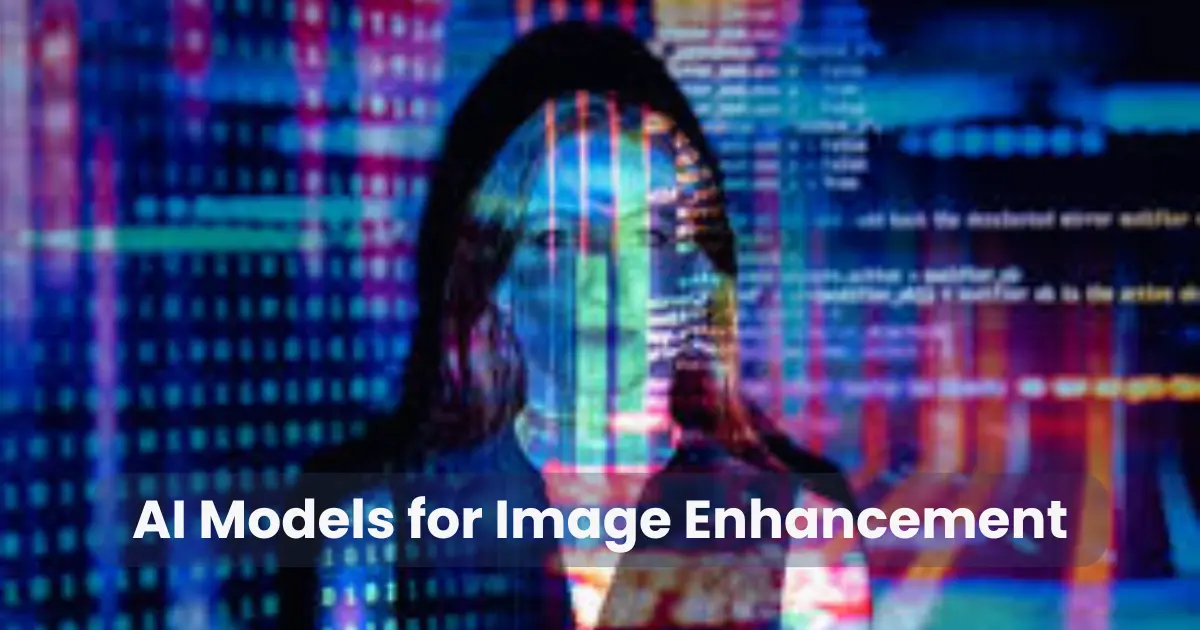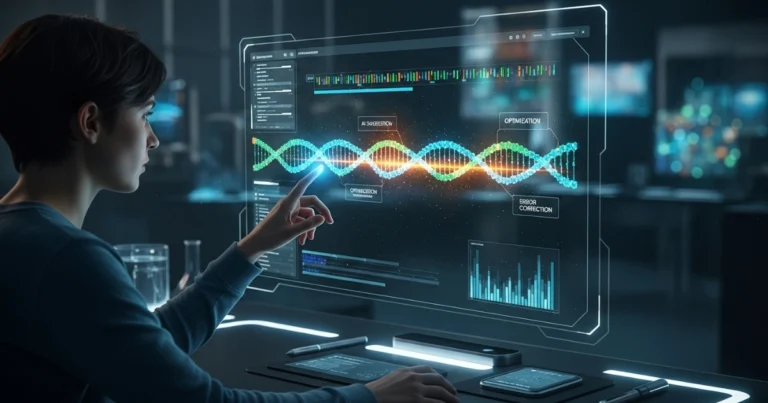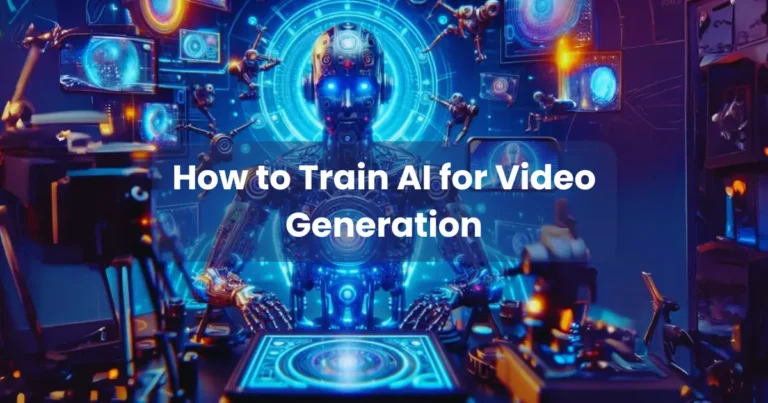AI Models for Image Enhancement In 2025

Contents
AI models for image enhancement have revolutionized the way digital visuals are processed. These advanced models utilize deep learning and neural networks to improve image quality by enhancing resolution, reducing noise, and restoring lost details. With the rapid evolution of artificial intelligence, AI models for image enhancement have become essential tools in photography, medical imaging, security, and entertainment. As demand for high-quality visuals increases, these models continue to push the boundaries of image processing, delivering sharper, clearer, and more realistic images with minimal manual effort.
What Are AI Models for Image Enhancement?
AI models for image enhancement are deep learning-based algorithms designed to improve the quality of digital images. These models analyze pixel patterns, detect distortions, and apply advanced processing techniques to enhance resolution, reduce noise, sharpen details, and restore lost information. Unlike traditional image editing methods, which rely on predefined filters and manual adjustments, AI-powered models adapt intelligently to different image conditions, producing more accurate and visually appealing results.
By leveraging convolutional neural networks (CNNs) and generative adversarial networks (GANs), AI models for image enhancement can upscale low-resolution images, remove blur, enhance colors, and even restore old or damaged photographs. These models are widely used in photography, medical imaging, surveillance, and content creation, transforming the way digital visuals are processed and optimized.
How AI Models Improve Image Quality
AI models for image enhancement use advanced deep learning techniques to refine digital images, making them clearer, sharper, and more detailed. These models leverage neural networks to analyze images at a pixel level, applying intelligent enhancements that surpass traditional editing methods. Below are some of the most effective ways AI models improve image quality:

1. Noise Reduction
Digital images often contain visual distortions, such as grainy textures or unwanted artifacts, especially in low-light conditions. AI-based noise reduction algorithms identify and remove these distortions while preserving important details. Unlike traditional denoising techniques, AI models intelligently differentiate between noise and essential image features, ensuring a cleaner and more natural-looking result.
2. Super-Resolution
Super-resolution AI models enhance image quality by increasing resolution without compromising clarity. These models use deep learning to predict and generate missing details in low-resolution images, producing high-definition visuals. AI-driven super-resolution is widely used in photography, video streaming, and medical imaging, where high-quality visuals are crucial.
3. Colorization
AI models can add realistic colors to black-and-white images by analyzing grayscale tones and predicting appropriate hues. Deep learning-based colorization tools, such as DeOldify, generate vibrant and accurate colorized images, making historical photos and monochrome visuals more engaging.
4. Image Restoration
AI models for image enhancement can restore old, damaged, or blurry images by reconstructing lost details. These models analyze degraded areas and intelligently fill in missing pixels, improving overall image quality. Image restoration is particularly beneficial in archival photography, medical scans, and security footage enhancement.
By combining these techniques, AI models for image enhancement significantly improve the clarity, resolution, and aesthetic appeal of images, making them suitable for a wide range of applications.
Popular AI Models for Image Enhancement
Several AI models for image enhancement have been developed to improve image quality using deep learning techniques. These models utilize convolutional neural networks (CNNs), generative adversarial networks (GANs), and other machine learning algorithms to enhance resolution, reduce noise, and restore details. Below are some of the most widely used AI models for image enhancement:

1. SRCNN (Super-Resolution Convolutional Neural Network)
SRCNN is one of the pioneering deep learning models for image super-resolution. It employs convolutional layers to upscale low-resolution images, reconstruct missing details, and enhance overall image sharpness. This model is widely used in applications requiring high-resolution image outputs, such as medical imaging and satellite imagery.
2. ESRGAN (Enhanced Super-Resolution Generative Adversarial Network)
ESRGAN is an advanced version of traditional super-resolution models, using GANs to generate highly detailed and realistic images. Unlike SRCNN, ESRGAN produces sharper textures and removes artifacts, making it a preferred choice for applications in gaming, photography, and film restoration.
3. DAIN (Depth-Aware Video Frame Interpolation)
DAIN is an AI model designed for video enhancement, particularly frame interpolation. It improves video quality by generating additional frames between existing ones, creating smooth motion and reducing blur. This model is commonly used in animation, gaming, and high-frame-rate video production.
4. DeOldify (AI-Based Colorization)
DeOldify is an AI-powered image colorization model that adds realistic colors to black-and-white images and videos. Using GANs and self-attention mechanisms, this model accurately predicts color tones, making it highly effective for restoring historical photos and old films.
Each of these AI models for image enhancement plays a crucial role in improving visual quality across different fields. As AI technology advances, these models continue to evolve, offering even more precise and efficient image enhancement capabilities.
Applications of AI Models for Image Enhancement
AI models for image enhancement have transformed multiple industries by improving image quality, restoring old visuals, and generating high-resolution outputs. These models use deep learning techniques to enhance details, reduce noise, and upscale images, making them valuable in various fields. Below are some key applications:

1. Photography and Editing
AI-powered tools help photographers and designers enhance images by sharpening details, correcting colors, and removing unwanted noise. Many photo editing software applications integrate AI models for automatic enhancements, making professional-quality edits accessible to users without advanced editing skills.
2. Medical Imaging
In healthcare, AI models for image enhancement improve the clarity of medical scans such as X-rays, MRIs, and CT scans. Enhanced images help doctors detect diseases more accurately, leading to better diagnoses and treatment planning. AI-based image reconstruction is also used in low-dose imaging to reduce radiation exposure while maintaining high-quality visuals.
3. Security and Surveillance
AI-enhanced image processing is essential for security systems, improving the quality of CCTV footage and facial recognition systems. These models help recover blurred or low-resolution images, making it easier to identify individuals, objects, or suspicious activities in surveillance footage.
4. Gaming and Animation
The gaming industry benefits from AI models for image enhancement through real-time upscaling and texture improvements. AI-powered rendering allows for higher-quality graphics while maintaining performance efficiency. In animation, AI models enhance frame rates and detail levels, leading to smoother and more immersive visual experiences.
These applications highlight the versatility of AI models for image enhancement in various industries. As technology advances, AI-driven image processing will continue to improve, offering even more precise and efficient solutions for enhancing digital visuals.
Advantages of Using AI for Image Enhancement
AI models for image enhancement offer numerous benefits across different industries. These models leverage deep learning to refine image quality, automate enhancements, and deliver superior results compared to traditional methods. Below are some key advantages:

1. Superior Image Quality
AI-powered image enhancement improves resolution, reduces noise, and restores details, making images clearer and more visually appealing. Advanced models such as ESRGAN and SRCNN can upscale images without losing quality, ensuring high-definition outputs.
2. Time and Effort Efficiency
Unlike manual editing, which requires extensive adjustments, AI models for image enhancement automate the process. With just a few clicks, users can enhance images without spending hours on editing, making it ideal for photographers, designers, and content creators.
3. Restoration of Old and Damaged Images
AI models can reconstruct and restore old or damaged photographs by removing scratches, filling in missing details, and enhancing faded colors. This is particularly useful for historical photo restoration and archival projects.
4. Real-Time Image Processing
AI-powered enhancements can be applied in real-time for applications such as video streaming, gaming, and surveillance. AI-based upscaling allows low-resolution visuals to be transformed into high-quality images instantly, enhancing user experience.
5. Versatility Across Industries
AI models for image enhancement are widely used in various sectors, including healthcare, security, entertainment, and digital marketing. Their ability to refine image details, enhance medical scans, and improve video quality makes them invaluable tools for professionals.
By integrating AI models for image enhancement, industries can achieve higher-quality visuals with minimal effort. As AI technology evolves, these models will continue to provide even more advanced image processing solutions.
Challenges and Limitations
Despite the numerous advantages of AI models for image enhancement, there are still some challenges and limitations that need to be addressed. While these models significantly improve image quality, certain technical and practical issues can impact their effectiveness. Below are some key challenges:
1. Computational Requirements
AI-powered image enhancement models require significant computational power to process and generate high-quality images. High-performance GPUs and large memory capacities are often necessary, making it challenging for users with limited hardware resources.
2. Over-Processing and Artificial Look
Some AI models for image enhancement may produce results that appear overly sharpened or artificially enhanced. Excessive noise reduction and upscaling can sometimes lead to a loss of natural textures, making images look unnatural or unrealistic.
3. Training Data Limitations
The performance of AI models depends on the quality and diversity of training datasets. If a model is trained on limited or biased data, it may struggle to enhance certain types of images accurately. This limitation can affect the model’s ability to generalize across different image styles and conditions.
4. Processing Time for High-Resolution Images
While AI models can enhance images efficiently, processing large, high-resolution images or videos can take considerable time, especially on standard consumer devices. This can be a challenge for real-time applications requiring instant image improvements.
5. Ethical and Copyright Concerns
AI models for image enhancement often generate content based on learned patterns, raising concerns about copyright infringement and ethical use. In some cases, AI-enhanced images may alter original content in ways that could misrepresent reality or create misleading visuals.
While AI models continue to advance, addressing these challenges is crucial for optimizing their performance and ensuring responsible usage. Ongoing research and development will help improve efficiency, realism, and accessibility in AI-driven image processing.
Future Trends in AI-Powered Image Enhancement
As artificial intelligence continues to evolve, AI models for image enhancement are expected to become more powerful, efficient, and accessible. Emerging trends indicate that these models will revolutionize industries such as photography, gaming, healthcare, and digital media. Below are some key future developments:

1. Real-Time AI Enhancement
Future AI models will offer real-time image and video enhancement, allowing instant upscaling, noise reduction, and color correction. This will be particularly beneficial for live streaming, gaming, and video conferencing applications, where high-quality visuals are essential.
2. AI-Powered 3D Image Enhancement
Advancements in AI will extend beyond 2D images, enabling enhancement of 3D visuals. AI-driven 3D rendering will improve textures, lighting, and depth perception in CGI, gaming, and virtual reality (VR) applications, creating more immersive experiences.
3. Self-Learning AI Models
Next-generation AI models will incorporate self-learning capabilities, allowing them to adapt to different image styles and lighting conditions without requiring extensive retraining. These models will improve over time based on user feedback and new datasets.
4. Improved Energy Efficiency
To overcome the challenge of high computational costs, future AI-powered image enhancement tools will be optimized for lower energy consumption. This will make high-quality image processing more accessible on mobile devices, cameras, and consumer electronics.
5. Ethical AI and Responsible Image Enhancement
As concerns over deepfakes and AI-generated content grow, future models will include safeguards to ensure ethical use. AI-driven image enhancement will be designed to maintain authenticity while preventing manipulation that could lead to misinformation.
These trends highlight the ongoing advancements in AI models for image enhancement, making them more effective, intelligent, and responsible. As technology progresses, these innovations will set new standards for digital imagery across various fields.
Conclusion
AI models for image enhancement have revolutionized the way images are processed, offering superior quality, efficiency, and accessibility across multiple industries. These models utilize deep learning techniques to upscale resolution, remove noise, restore details, and enhance visuals with remarkable accuracy. From photography and medical imaging to gaming and surveillance, AI-powered enhancements continue to drive innovation and improve user experiences.
Despite the numerous advantages, challenges such as high computational requirements, over-processing, and ethical concerns remain. However, with ongoing advancements in AI technology, future models will overcome these limitations by offering real-time processing, self-learning capabilities, and enhanced energy efficiency. As AI models for image enhancement continue to evolve, they will become indispensable tools for professionals and consumers alike. By integrating AI-driven solutions, industries can achieve higher-quality visuals with minimal effort, setting new standards for digital imagery in the years to come.






